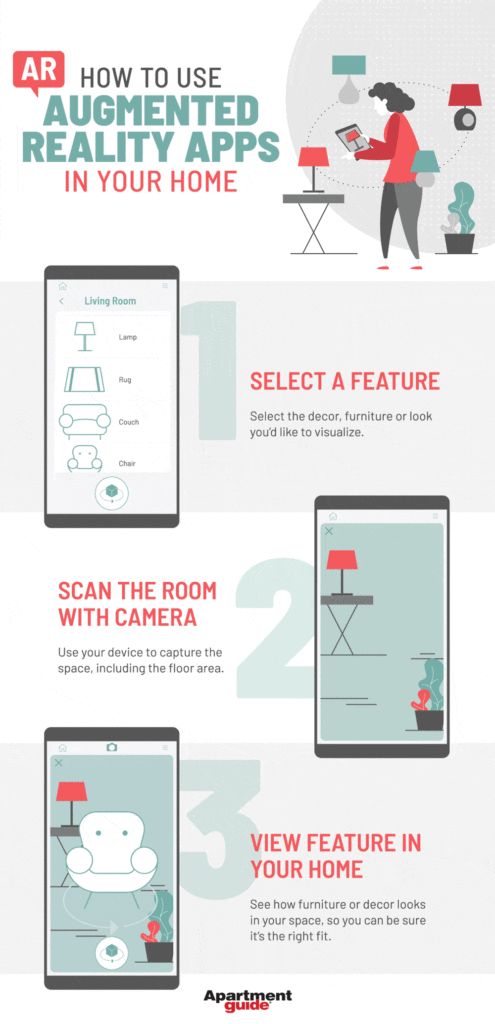Augmented reality, or AR, has become one of the most exciting and rapidly growing technologies in recent years. It has the potential to revolutionize the way we see and interact with the world around us, blending the digital and physical worlds seamlessly together. From entertainment to education, healthcare to retail, AR is transforming a range of industries in ways we never thought possible.
So, why augmented reality? The answer lies in its ability to enhance our experiences, allowing us to see things in new and innovative ways. With AR, we can bring products to life, visualize data in real-time, and even explore places we’ve never been before. Its versatility and adaptability make it a powerful tool for businesses and individuals alike, offering endless possibilities for creativity and innovation. In this article, we’ll delve deeper into the world of AR, examining its history, applications, and future potential.

Augmented Reality: What Is It and Why Is It So Popular?
Augmented reality (AR) is a technology that superimposes digital information and images on the physical world. It combines the physical and digital worlds to create immersive experiences that can be used for a variety of different applications. AR is becoming increasingly popular due to its ability to present information in a more interactive and engaging way, making it a valuable tool for businesses and consumers alike.
The Benefits of Augmented Reality
One of the major benefits of augmented reality is its ability to create immersive, interactive experiences. With augmented reality, users can interact with digital content in the physical world in a more engaging way than they could with traditional media. This can be especially useful for businesses who want to create a unique and memorable experience for their customers. Additionally, augmented reality can be used for educational purposes, such as providing an immersive learning experience for students.
Another advantage of AR is its ability to provide real-time data and information. For example, AR can be used to provide real-time updates about a product or service, allowing businesses to keep customers informed about their offerings. Furthermore, AR can be used to provide contextual information about a location, such as directions or information about nearby attractions and points of interest.
The Applications of Augmented Reality
The applications of augmented reality are virtually limitless. AR can be used to create immersive gaming experiences, as well as interactive training programs and educational experiences. Additionally, AR can be used to create virtual showrooms, allowing customers to explore a product before they buy it. AR can also be used to provide live updates and information about a product or service, allowing businesses to keep customers engaged and informed. Finally, AR can be used to create interactive experiences for conferences, events, and other gatherings.
Augmented reality is an incredibly powerful tool that can be used for a variety of different applications. From creating immersive experiences for customers to providing real-time updates and information, AR has the potential to revolutionize how businesses and consumers interact with each other. As AR technology continues to develop, it will become increasingly popular and its applications will expand even further.
Frequently Asked Questions About Augmented Reality
Augmented reality (AR) is a way of overlaying digital content and information onto the physical world—enhancing one’s current perception of reality. It is being used in a wide range of industries, from gaming and entertainment to retail, industrial, and medical applications.
What Is Augmented Reality?
Augmented reality (AR) is a technology that allows users to interact with virtual objects in the physical environment. AR uses a combination of digital technologies, such as 3D models, sensors, and algorithms, to overlay digital content onto the physical world. This can be used to add an extra layer of information to an existing environment, such as providing information about a product or highlighting safety hazards in a factory. AR can also be used to create fully immersive experiences, such as playing a game or exploring a virtual world.
How Is Augmented Reality Used?
Augmented reality is used in a variety of industries, from gaming and entertainment to retail, industrial, and medical applications. In gaming, AR can be used to turn the physical world into a game board and bring characters to life. In retail, AR can be used to provide customers with more information about a product or to virtually try on clothes. In industrial applications, AR can be used to overlay digital instructions onto physical equipment and highlight safety hazards. In medical applications, AR can be used to assist with surgical procedures or to provide virtual training for medical students.
What Are the Benefits of Augmented Reality?
The main benefit of augmented reality is that it allows users to interact with digital content in the physical world. This can help to make complex concepts more accessible and easier to understand, as well as making the physical world more engaging and entertaining. AR also has the potential to improve safety and efficiency in industrial and medical applications, as well as providing new and exciting experiences in gaming and entertainment.
What Technology Is Needed for Augmented Reality?
Augmented reality requires a combination of digital technologies to work, including 3D models, sensors, and algorithms. 3D models are used to create the virtual content that will be displayed in the physical world. Sensors are used to track the physical environment and the user’s movements, allowing the AR system to respond to changes in the environment. Algorithms are used to process the data collected by the sensors and determine how the virtual content should be displayed.
What Are the Limitations of Augmented Reality?
One of the main limitations of augmented reality is that it requires a lot of computing power, which can make it difficult to use on mobile devices. It also requires a lot of data to be collected and processed in order to display the virtual content in the physical world, which can lead to latency issues. Additionally, AR systems can be difficult to develop, as they require a lot of programming knowledge and a deep understanding of the underlying technologies.

Are AR Sunglasses the Future of Mobile Gaming?
In conclusion, augmented reality has become an increasingly popular technology that has transformed the way we interact with the world around us. Its ability to bridge the gap between the virtual and physical worlds offers endless possibilities for businesses and individuals alike. Augmented reality has the potential to enhance our daily lives, from entertainment and education to healthcare and retail.
Furthermore, with the continuous advancements in technology, augmented reality is expected to become even more widespread, accessible, and affordable. As we continue to innovate with this technology, it is essential that we prioritize ethical considerations and responsible use to ensure that the benefits of augmented reality are maximized. With its ability to create immersive, interactive, and engaging experiences, augmented reality is undoubtedly a technology that we should all be paying attention to.


